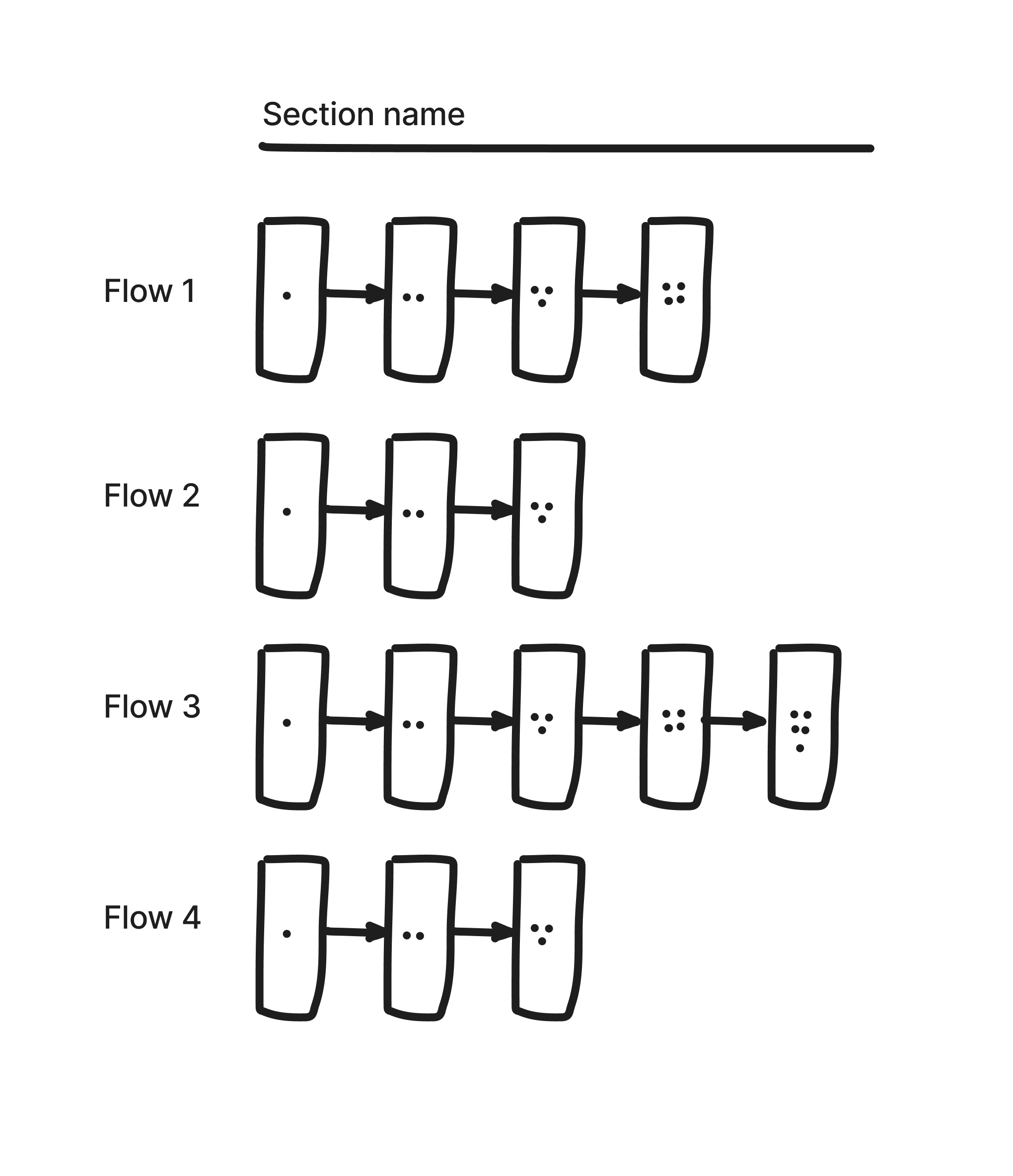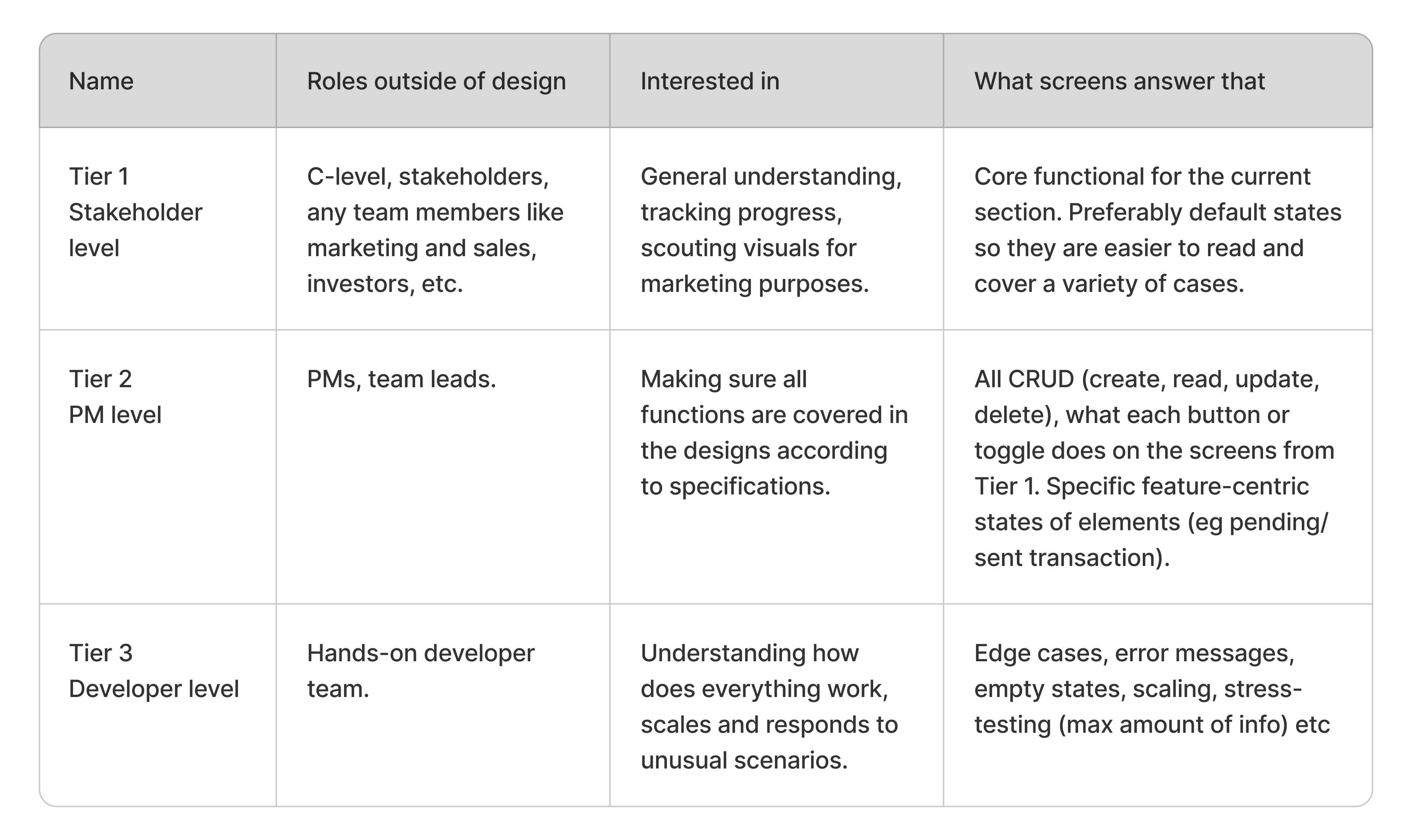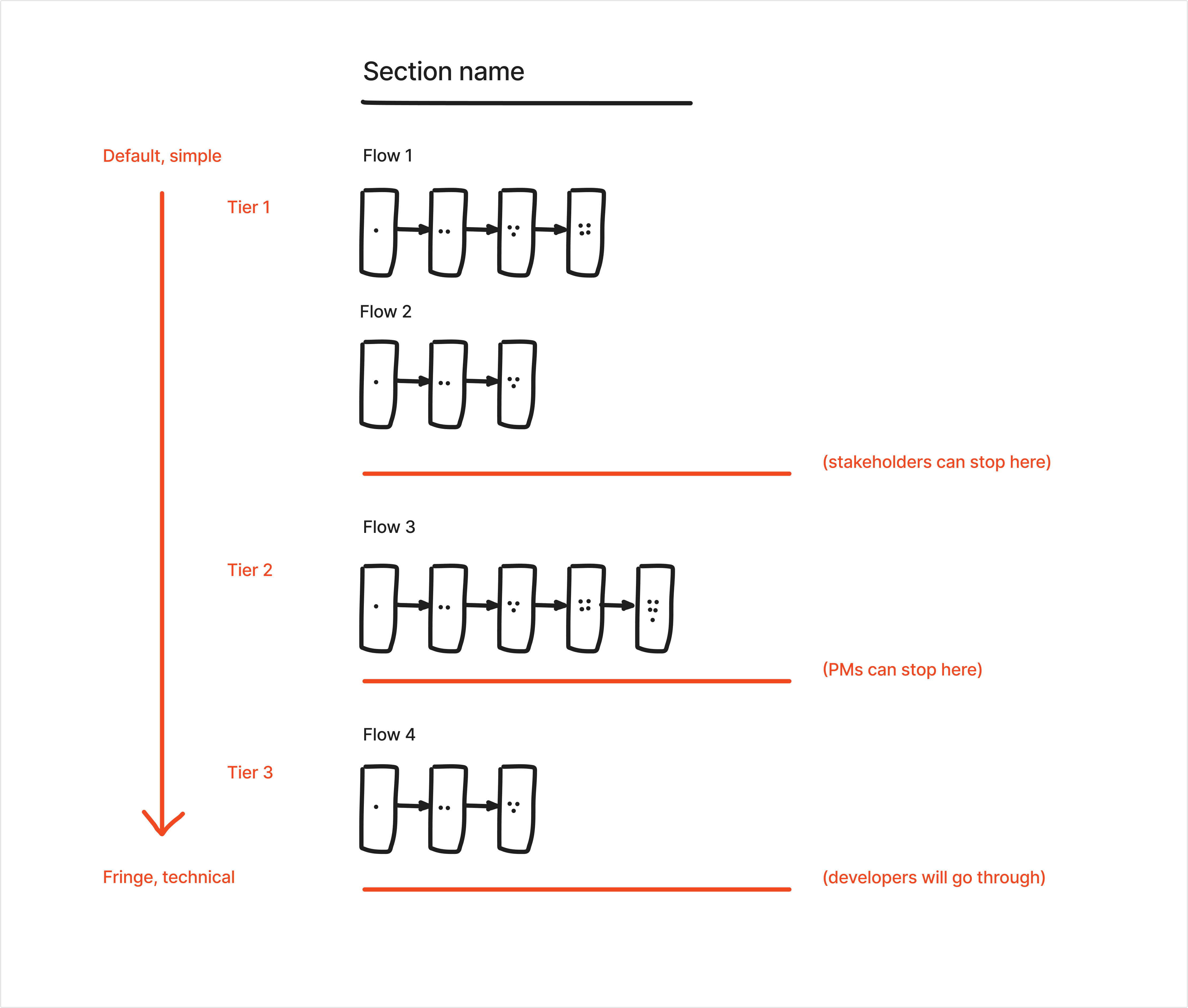
Design teams, C-levels, and managers with access to Figma files.
How to structure Figma file for optimal readability for various types of users.
Figma files serve as a source of knowledge for multiple stakeholders, depending on the company structure and industry. For smooth knowledge transition and decision-making, those people should be able to read and understand Figma files, ideally without external guidance.
There are multiple things that a designer has to do to achieve that (I will cover all of them in my comprehensive guide on how to Figma, stay tuned), but the focus of this article is specifically organization hierarchy within a single Figma file page.
What I usually see when the designer presents me with their work looks something like this (for this example, let's say there's 1 section and 4 flows, each 3 to 5 screens)

So in order to understand what's what, a typical visitor has to scan through the names (that are hopefully descriptive enough), scan through the available screens to get a general understanding of what it is about.
Good enough, right? But it could be even better.
To take readability to the next level, consider who will be accessing this file. On average, I can divide them into 3 groups, each of which has a different level of interest in the technical details of the designs.

So the best way to manage everyone's time would be to answer every group's questions as soon as possible, which means that they won't need to scroll and read past a certain section.

That's it, now go try it.